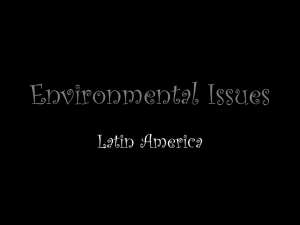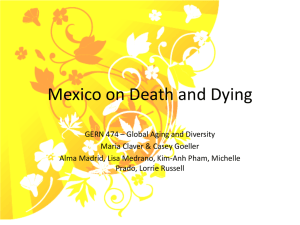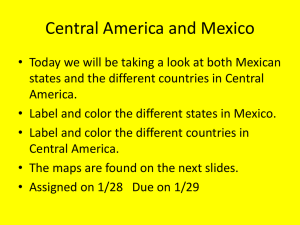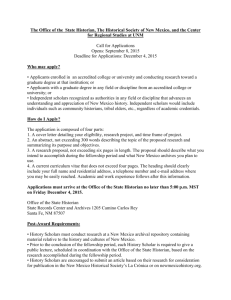Human-Environment Interaction: Geography Presentation
advertisement
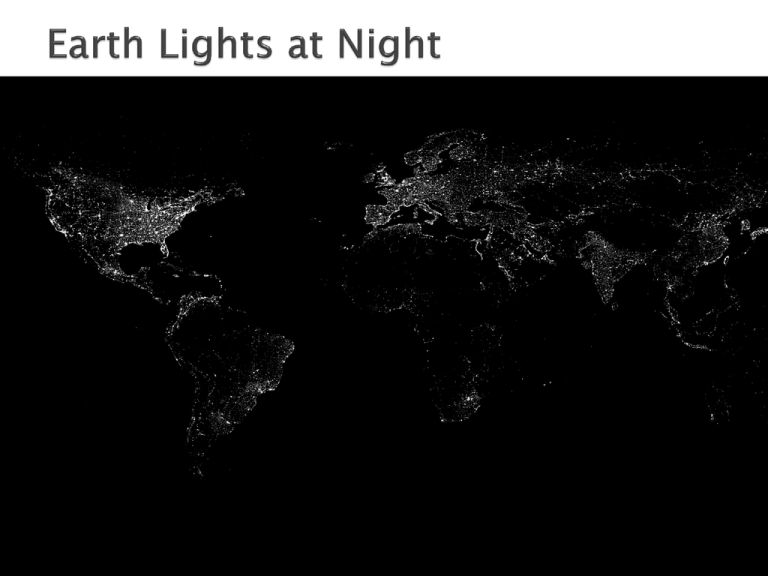
Canada's population is almost exclusively along the US border. There is a high population concentration along the Mediterranean Coast. It's easy to spot London, Paris, Stockholm and Vienna. Note the Nile River and the rest of the "Dark Continent." After the Nile, significant lights don't come on again until Johannesburg. Look at the Australian Outback and the Trans-Siberian Rail Route. Note the difference between North and South Korea. Note the density of India and Japan. This is what the Earth looks like at night. Can you find your favorite country or city? Surprisingly, city lights make this task quite possible. Human-made lights highlight particularly developed or populated areas of the Earth's surface, including the seaboards of Europe, the eastern United States, and Japan. Many large cities are located near rivers or oceans so that they can exchange goods cheaply by boat. Particularly dark areas include the central parts of South America, Africa, Asia, and Australia. The above image is actually a composite of hundreds of pictures made by orbiting satellites. 1. How Does the Environment Influence Human Behavior? 2. How Do Humans Influence Their Environment? By understanding how the Earth’s physical features and processes shape and are shaped by human activity, geographers help societies make informed decisions. Settlement patterns Housing materials Agricultural activity Recreational activity Transportation patterns How do people use their environment, how and why do they change it, and what consequences result from these changes? Examples: Diverting water: dams, canals, polders Changing the landscape: terrace farming, deforestation, desertification Changing the environment: acid rain, pollution FACTS: Built 1979 Control Flooding Nile River Aswan, Egypt Lake Nasser Helped with Irrigation Decreased soil fertility FACTS: Central Asia Uzbekistan Kazakhstan Formerly USSR: Diverted water to grow cotton/rice Disappearing waters and poisonous runoff from the fields have caused the sea to shrink and increased desertification. FACTS: 1450 miles Through SW U.S. and NW Mexico Source – Rocky Mtns. Mouth – Gulf of California More than 20 dams Water diverted to the Imperial Valley No longer reaches the Gulf of California FACTS: Northern Europe Most of the country is below sea level Sea walls/dunes protect it from the sea. Rainforest FACTS: Contain more than ½ the world's 10 million species of plants, animals and insects One-fifth of the world's fresh water 20 percent of the world oxygen Brazil – SA Nepal – Asia Malaysia - Asia Once covered 14 % of earth. Now cover 6% 1-1/2 acres lost every minute Greatest Areas of Impact Africa – Sahara Desert Asia – Gobi Desert Central Asia SW United States CAUSES: Overgrazing Drought Poor Farming Techniques Overpopulation Natural Climate Patterns Given the causes, where might you find acid rain the most? Developed Countries: US, Europe, China Coniferous forests in the Appalachian Mountains destroyed by acid rain. AIR LAND WATER Mexico City, Mexico Buenos Aires, Argentina Beijing, China Cairo, Egypt Seoul, South Korea Karachi, Pakistan Jakarta, Indonesia Los Angeles, California USA Mexico City reports unhealthy ozone emissions nearly 85% of the year. Mexico's geographical location--in the center of a volcanic crater and surrounded by mountains-- locks in the air pollution, causing smog to sit above the city. Chernobyl, Ukraine - Chernobyl is now infamous for the 1986 nuclear disaster that killed 30 people, forced 35,000 to evacuate their homes, and left a 19-mile radius around the plant that is still uninhabitable to this day.








